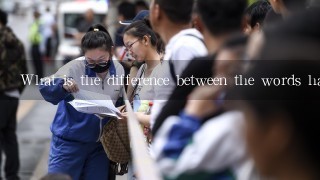What is the difference between the words happy and sad in their cultural context?

Happy:
- Western Culture: Happy is typically associated with positive emotions like joy, contentment, and fulfillment. It is often used to describe personal achievements, material possessions, and social events.
- Eastern Culture: Happy is associated with a more balanced and holistic view of life. It is often seen as a state of inner peace, contentment, and fulfillment, rather than just external material wealth.
Sad:
- Western Culture: Sad is typically associated with negative emotions like grief, sorrow, and despair. It is often used to describe personal losses, tragic events, and social misfortunes.
- Eastern Culture: Sad is associated with a range of emotions, including grief, disappointment, and nostalgia. It is not seen as a negative state, but rather a natural part of life that should be acknowledged and processed.
Additional Points:
- In some Eastern cultures, the terms "happy" and "sad" are used with different connotations. For example, in Chinese, the word for happy is "xing" (xing), while the word for sad is "xun" (xun).
- In Western culture, the word "happy" is often used to describe both positive and negative emotions, while the word "sad" is typically used to focus on negative emotions.
- The cultural context of happiness and sadness can vary widely, depending on the individual's cultural background, upbringing, and personal experiences.
Conclusion:
The words "happy" and "sad" have different cultural meanings. While they are often used interchangeably in Western culture, they are used with different connotations in Eastern culture. Happy is typically associated with positive emotions and personal fulfillment, while sad is associated with negative emotions and a range of other emotions.





































































